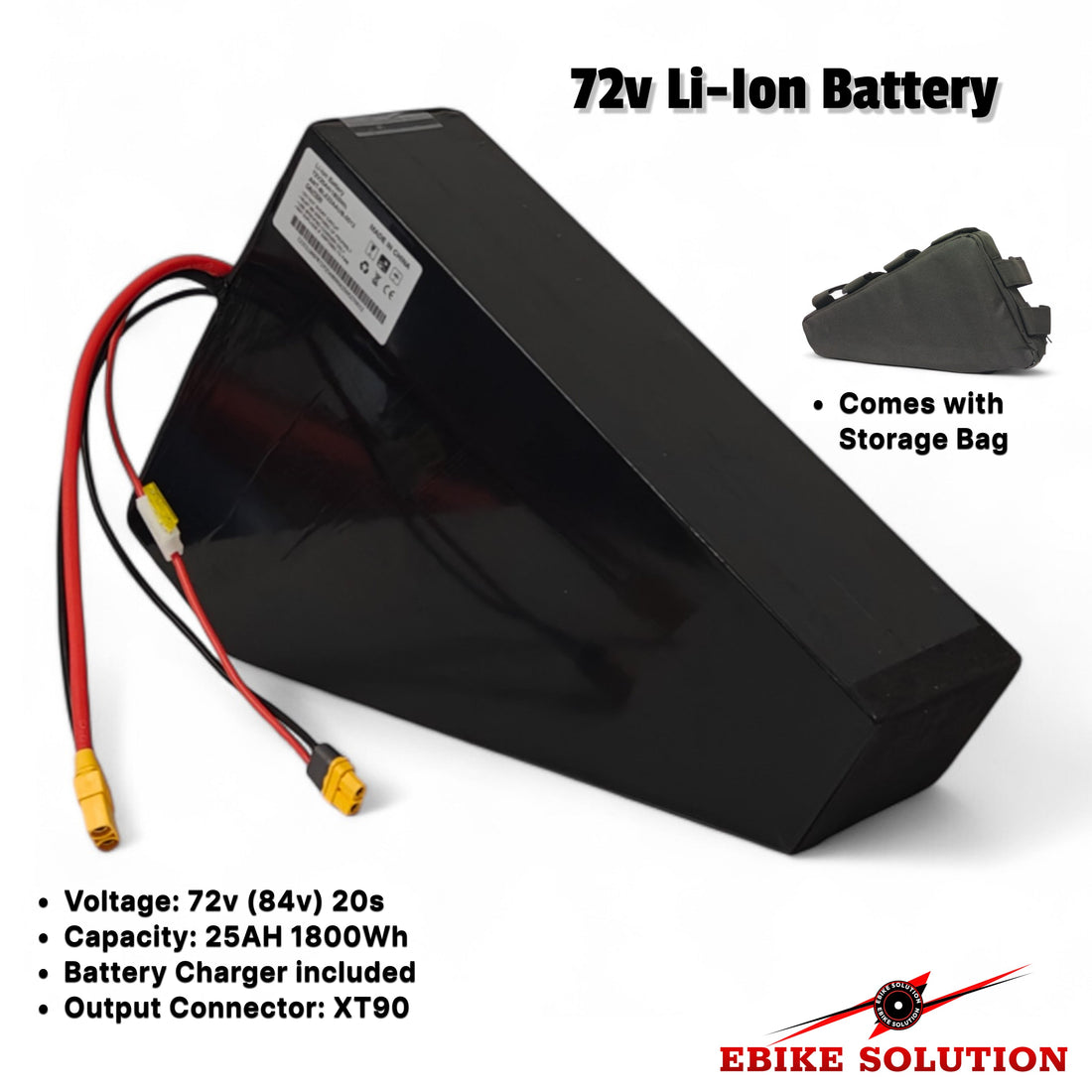
Battery Match Is Critical When Paired with an E-Bike Kit
Share
Battery Match Is Critical When Paired with an E-Bike Kit
Building your own e-bike can be exciting — you choose the motor, controller, and kit that fit your goals.
But one of the most overlooked factors in performance and reliability is the battery match.
Even the best e-bike motor kit won’t perform properly if your battery can’t supply enough power (voltage and current).
Think of it like putting a race engine in a car with a weak fuel pump — it just won’t deliver the performance you expect.
Why Battery Matching Matters
Every e-bike kit is designed to run on a specific voltage range (like 36 V, 48 V, 72 V, or 96 V).
Your battery voltage must match that of your controller and motor. If it doesn’t, the system may:
-
Fail to power on
-
Trigger safety shutdowns
-
Overheat or damage components
Matching your battery ensures:
-
Consistent performance and range
-
Longer lifespan for both battery and controller
-
Safe, efficient energy delivery
Understanding Voltage, Current, and Capacity
| Term | What It Means | Why It Matters |
|---|---|---|
| Voltage (V) | Determines your e-bike’s top speed potential | Must match the controller rating |
| Current (A) | Controls acceleration and torque | Your battery must supply enough current without overheating |
| Capacity (Ah) | The amount of stored energy (range) | Higher capacity = longer rides |
| Power (W) | Voltage × Current = Power | Example: 72 V × 50 A = 3,600 W |
Tip: If your e-bike kit includes a 72 V 60 A controller, your battery should deliver at least 60 A continuous to reach full potential.
Common Voltage Levels for E-Bike Kits
| Kit Voltage | Common Uses | Recommended Battery Configuration |
|---|---|---|
| 36 V | City bikes, light commuters | 10S lithium pack |
| 48 V | Mid-range kits, mixed terrain | 13S lithium pack |
| 60 V | Higher torque and hill climbing | 16S lithium pack |
| 72 V | Enduro, performance e-bikes | 20S lithium pack |
| 96 V | Extreme custom builds | 24S lithium pack |
Using the wrong voltage can trigger your controller’s undervoltage or overvoltage protection, preventing operation altogether.
Why Current Rating Is Just as Important
Many riders choose a battery based only on its voltage and capacity — but current delivery is equally vital.
Each battery includes a BMS (Battery Management System) that limits how much current it can safely discharge.
If your controller demands more than your BMS can provide, you’ll experience:
-
Voltage sag under load
-
Sudden power cuts
-
Reduced acceleration
Example
If your e-bike controller draws 80 A but your battery’s BMS is limited to 40 A, your bike will only perform at half power — and could trip the protection circuit.
Signs of a Battery Mismatch
-
Controller shuts off at high throttle
-
Battery gets hot during acceleration
-
Voltage drops quickly on climbs
-
Charger takes longer than usual to refill capacity
-
Motor feels underpowered despite high voltage
If you notice these issues, your battery likely can’t supply enough continuous current for your e-bike kit.
Real-World Pairing Examples
| E-Bike Kit | Controller Rating | Recommended Battery | Example Setup |
|---|---|---|---|
| 1500 W Kit (48 V) | 48 V 30 A | 48 V 20 Ah (13S8P) | Great for commuting & moderate hills |
| 3000 W Kit (72 V) | 72 V 50–60 A | 72 V 30 Ah (20S8P) | Perfect for enduro builds |
| 5000 W Kit (72 V–96 V) | 72 V 100 A or 96 V 80 A | 72 V 40 Ah (high-discharge cells) | Ideal for off-road and high-speed riding |
| 8000 W+ Custom Build | 72 V 150–200 A | 72 V 50 Ah+ | Designed for Stealth Bomber-style e-bikes |
Sabvoton controllers, for instance, can draw anywhere between 45 A and 200 A — your battery must be rated to handle that without overheating.
Best Practices for a Perfect Match
-
Match the voltage of your controller exactly.
-
Check your BMS rating — it should exceed your controller’s max current draw.
-
Use quality connectors like XT90 or QS8 for high-power systems.
-
Keep cable runs short and use thick gauge wires to prevent power loss.
-
Avoid low-quality cells — invest in trusted lithium brands like Samsung, LG, or Panasonic.
-
Monitor voltage sag during acceleration; excessive drop means your battery is undersized.
Final Thoughts
When pairing an e-bike kit with a battery, remember that voltage compatibility and current capacity are the two pillars of performance.
A mismatched setup won’t just underperform — it can shorten the lifespan of every component in your system.
A properly matched battery:
-
Delivers smoother acceleration
-
Keeps components cooler
-
Provides consistent range and reliability
If you’re unsure which battery suits your controller or motor, contact E-Bike Solution for tailored advice.
👉 Browse compatible controllers and batteries:
Shop Now →



